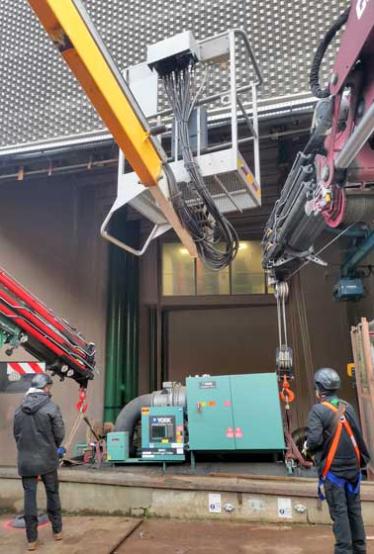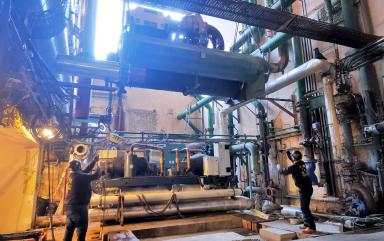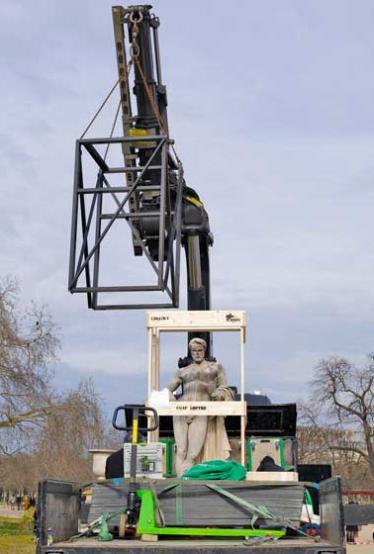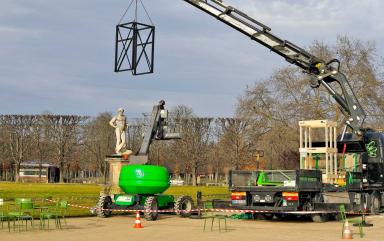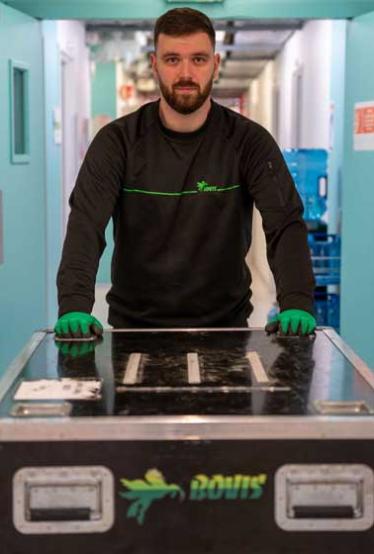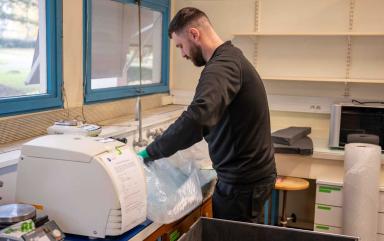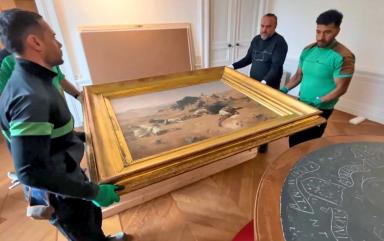Handling of laboratory equipment in Lausanne

Etranger
Handling and installation of a precision laser optical table at the Swiss Federal Institute of Technology in Lausanne (EPFL)
Handling high-precision scientific equipment requires technical expertise and meticulous attention. At the École Polytechnique Fédérale de Lausanne (EPFL), a complex handling project was recently completed to install a precision laser optical table. This project, which is essential for advanced research in optics, involved several decisive steps to ensure the integrity and functionality of expensive equipment.
Unloading and delicate handling of laboratory equipment
The first step of this project consisted of the unloading of the equipment. The instruments transported were extremely expensive and delicate, requiring careful handling. The team in charge used specialized unloading techniques to ensure the safety of the equipment. Suitable lifting devices were employed to minimise the risk of damage, demonstrating the importance of precision and caution in the handling of laboratory equipment in Lausanne.
Once the equipment was unloaded, the next step was disbursement. This process involved removing the equipment from its protective crates, a task that required great delicacy to avoid any impact or vibration that could damage the sensitive components. After the disbursement, the equipment was transported to the room dedicated to the new installation. The team used special transport trolleys and shock absorbers to protect the equipment during movement inside the building.
Installation of a 3T aluminum gantry crane
An important step in the project was the installation of an aluminium gantry crane capable of supporting a load of 3 tonnes and a span of 3 metres. This gantry had to provide a stable and reliable structure for the assembly of the equipment. The team erected the gantry with precision, ensuring that it was perfectly aligned and secured to support the expected loads. This structure was essential for mounting the other components, ensuring a robust and reliable support.
Laying marble with a handling stacker
The next step involved laying two marbles, each weighing 200 kg, using a handling stacker. The marbles, which are essential to provide a flat and stable surface for the optical table, were placed with millimetre precision. The use of the stacker has allowed for precise placement control, ensuring that the marbles were properly aligned and secured to their support. This delicate operation required perfect coordination between the team members to avoid any imbalance or sudden movement.
Assembly of the tunnel to the gantry
The tunnel, an essential part of the optical table structure, was then assembled to the gantry. This complex task required precise timing and attention to detail. The team carefully aligned the tunnel with the gantry, using measuring tools to ensure that all connections were properly secured and aligned. This assembly was fundamental to ensure the stability and accuracy of the entire optical table structure.
Collaboration and assistance in the assembly of laboratory equipment
Throughout the process, the handling team worked closely with EPFL researchers and technicians. This collaboration was essential to ensure that all technical and scientific requirements were met. The team provided ongoing support, sharing their handling and assembly expertise to ensure that all components were installed correctly and working as intended.
Laser Placement
The last step, and probably the most critical, was the installation of the laser. The laser was the central equipment of the optical table and had to be installed with extreme precision. The team used high-precision measuring instruments to align the laser with the other optical components. This final phase culminated a complex handling process, culminating in the installation of a state-of-the-art optical system, ready to support EPFL's research.
Experts in laboratory equipment handling in Lausanne
The handling and installation of the precision laser optical table at EPFL was an impressive demonstration of technical competence and coordination. Every step, from initial unloading to final laser placement, was executed with meticulous precision, reflecting the importance of using precision material handling professionals for the handling of laboratory equipment. This project highlights not only the expertise in handling equipment in the laboratory in Lausanne, but also the essential collaboration between the technical and scientific teams to achieve common goals.
Share on :


